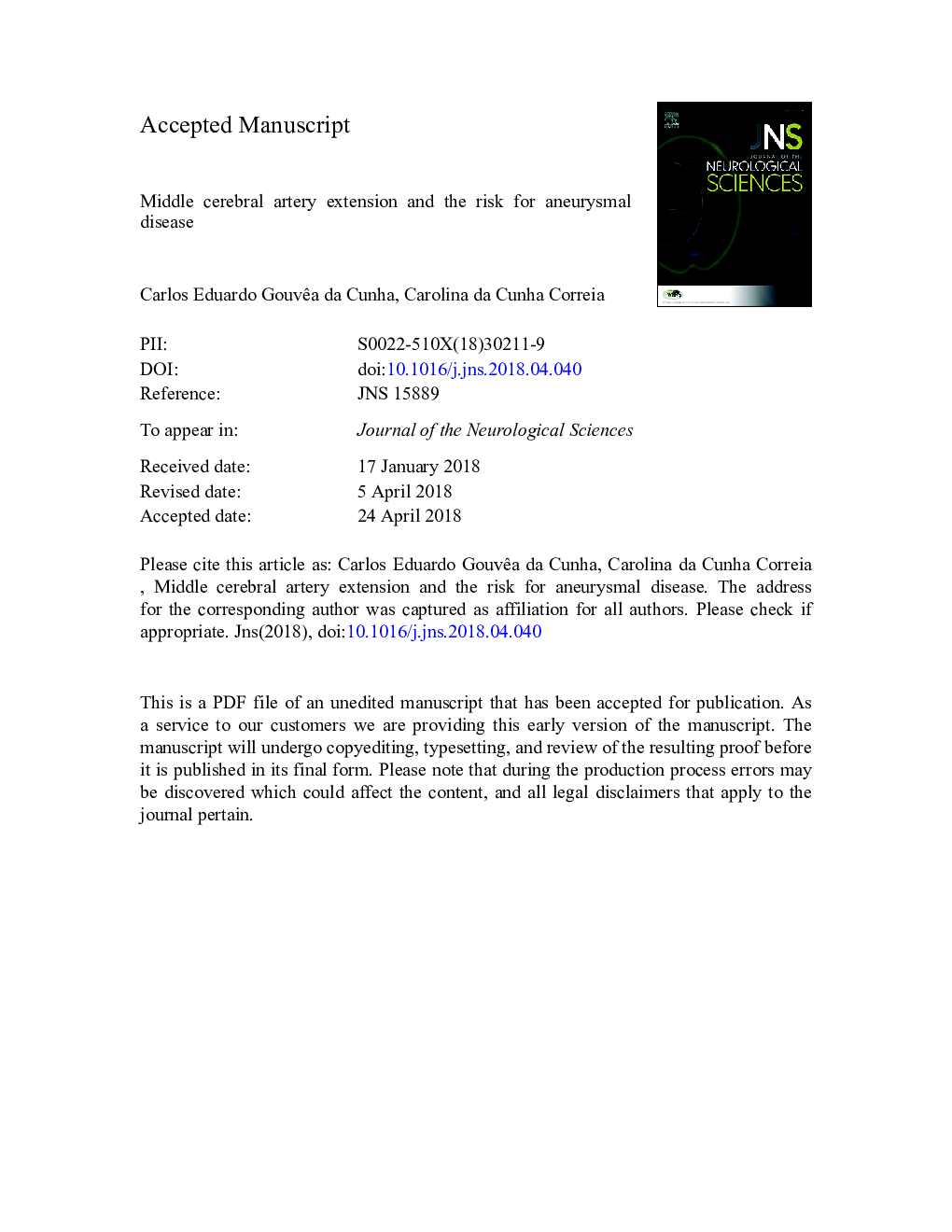| Article ID | Journal | Published Year | Pages | File Type |
|---|---|---|---|---|
| 8272404 | Journal of the Neurological Sciences | 2018 | 15 Pages |
Abstract
The intracranial artery aneurysm is an abnormal dilatation at the wall and the most serious complication is its rupture that is associated with high rates of neurological mortality and morbidity. Its most common location in arterial bifurcations suggests that the hemodynamic of blood flow plays a key role, but the effect of the length of the M1 segment of the middle cerebral artery is poorly explored. We analyzed biplanar brain angiograms to measure the extent of the M1 segment and its relationship to the presence of aneurysm at the bifurcation. Of 475 patients, a total of 682 bilateral measurements were analyzed. Women accounted for 58.7% and the mean age was 50.2â¯Â±â¯15.5. Aneurysms were detected in 45 arteries, about the average length of the M1 artery; the right segment measure (2.98â¯Â±â¯0.99â¯cm) was statistically lesser than the left (3.09â¯Â±â¯1.38â¯cm). Applying the regression coefficient, arteries with aneurysm have an average length of 0.419â¯cm smaller than an artery without aneurysm, and this difference was statistically significant (pâ¯<â¯0.05). Though the wall shear stress component is a proven risk factor for the development of aneurysms in bifurcations, a smaller extension of the M1 segment may also be implicated in its development.
Related Topics
Life Sciences
Biochemistry, Genetics and Molecular Biology
Ageing
Authors
Carlos Eduardo Gouvêa da Cunha, Carolina da Cunha Correia,
